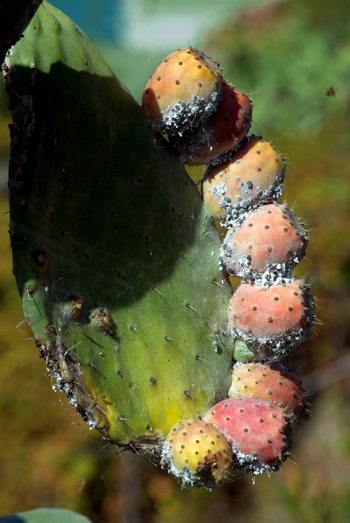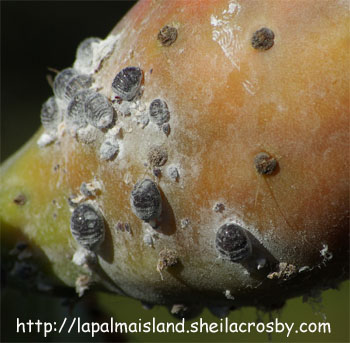Geckos

This is a gecko (Tarentola delalandii). They like to live in warm buildings or on sunny walls outside, and this one lives in my house. I think he must have got too close to one of my cats because his tail's regrowing. You see, if they're in serious danger of being eaten, their tails come off and provide a wriggling decoy while the gecko runs away.
He spent most of yesterday on this smooth vertical wall. They can walk across ceilings too, like Spiderman. I think he might have been asleep, since he never moved, although it's hard to tell because they don't have eyelids. I rather like to have him around, because they eat insects, including mosquitoes. When they hunt, they stalk the insect slowly until they get close enough, then the tongue flicks out and grabs the unfortunate bug, and that's that.
The really surprising thing about them is their call. It sounds like the chuckle of a mad axe-murderer, which is quite alarming when you're alone in the house and you haven't a clue what it is.
But of course you aren't in any danger at all - unlike the geckos. They're on the red list of threatened species.
Labels: animals, Canaries, Canary islands, La Palma, Wildlife
Bookmark with:
 Del.icio.us Del.icio.us
|
 Digg Digg
|
 Reddit Reddit
|
 Facebook Facebook
|
 Furl It Furl It
|
 Newsvine Newsvine
|
|







